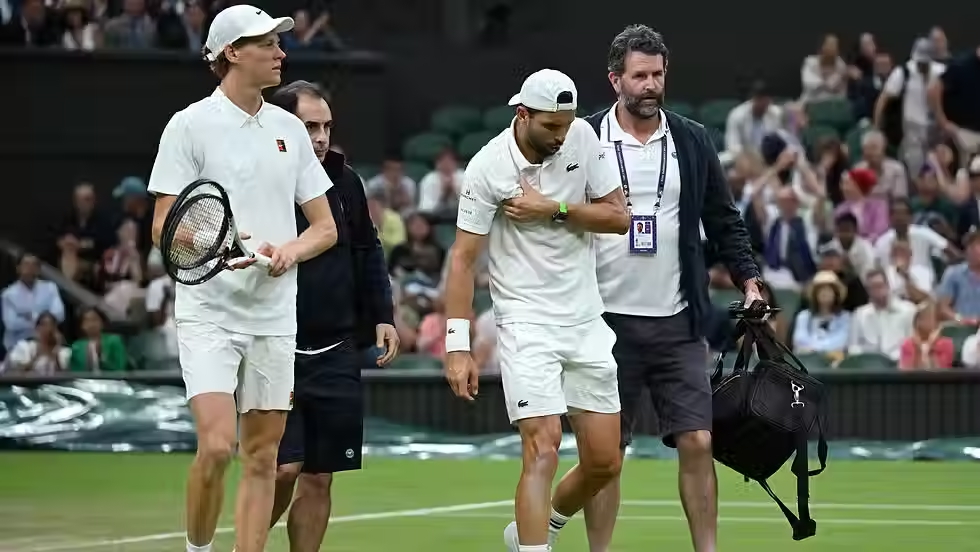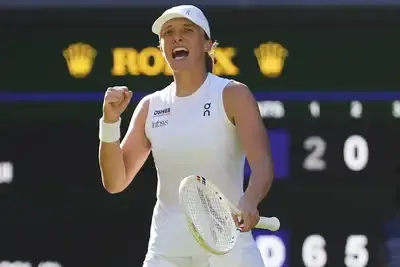We prepare for the main course!
- lydiajulian1
- Jul 12
- 5 min read
The Wimbledon finals are upon us. They are the main courses after two weeks of entrees. Stop! It is entirely inappropriate for an Australian to be using a culinary metaphor this week.
Away from Wimbledon, many around the world have been captivated by the Australian criminal trial of a woman accused of murdering her in-laws, her mother in law’s sister and the attempted murder of her mother-in-law’s husband. The trial, like Wimbledon, reached its culmination this week with Erin Patterson being found guilty of all four counts. Her malevolent murdering method was to serve her victims individual beef wellingtons laced with death cap mushrooms. Never has the public discussed so much the qualities of fatal fungi. There’s accidental food poisoning, but this was malice aforethought manifested in a main course.
However, a kitchen metaphor still seems appropriate. Thanks to the proliferation of popular kitchen shows and movies many are now familiar with the terms of sous chef and Head Chef. Top seeds and defending champions are the Head Chefs with those seeking to wrest their authority away from them being the stalking sous chefs.
Meryl Streep depicted one of the first media chefs, America’s Julia Child, in the movie, ‘Julie & Julia’. In one scene Streep is seen weeping over a pile of onions as she practises the methode gastronomique of slicing the tear inducing bulbs.
Many of the matches in Wimbledon’s second week saw the tennis sous chefs employ various methods of preparation to unsettle the Head Chefs.
This was particularly the case in the fourth-round match between Novak Djokovic and Australia’s Alex de Minaur. De Minaur, the young challenger, sliced and diced balls around a windy Centre Court to unsettle the seven-time champion. His strategy began brilliantly, with de Minaur claiming the first set 6-1. Djokovic was struggling to assert his authority for much of the match, but as his first serve percentage recovered, de Minaur’s declined and Djokovic claimed the second and third sets. De Minaur, however, continued to win the longer rallies and had points for a 5-1 lead in the fourth set.

Djokovic then asserted his authority, making clear he was not prepared to hand over the knives to the Centre Court kitchen just yet. In the presence of the greatest male grass court chef, Roger Federer, Djokovic won 14 of the last 15 points to reach his 16th Wimbledon quarter-final. Only he (102), Federer (105) and Navratilova (120) have won over 100 singles matches at Wimbledon. If Djokovic equals Federer’s record of eight titles, he will become the oldest Grand Slam singles champion, male or female. His quarter-final victory saw Djokovic reach a record Men’s 14th semi-final. Navratilova reached the penultimate round a mere seventeen times.
Another fourth round match saw journeyman apprentice chef Grigor Dimitrov take on top-seeded Janik Sinner who had not dropped a set all tournament. Dimitrov conjured up a game plan recipe that entirely unsettled Sinner, winning the first two sets 6-3 7-5. Sadly, he could not continue in the heat of the kitchen when a pectoral injury forced him to withdraw at 2-2 in the third set. Sinner was the luckiest quarter-finalist of the tournament.

Sinner’s quarter-final opponent was Ben Shelton. Shelton’s girlfriend, Trinity Rodman is the estranged daughter of bizarre basketballer turned political apologist for North Korea, Denis Rodman. Not averse to competing in sport at the highest level, Trinity Rodman , is a member of America’s Women’s soccer team. Sinner had clearly regained his focus and despatched his slightly younger opponent in straight sets.
Another young American Taylor Fritz earned the right to take on defending champion Carlos Alcaraz in the semi-finals. Runner up in last year’s US Open, Fritz, has been rewarded for his tenacity over the fortnight. Against Alcaraz in the semi-final, Fritz managed to claim a set, but could not withstand the ferocity and variety of shot of the defending champion. Has anyone hit drop shots with more confidence and effect than Alcaraz?

Alcaraz now has the chance to join Borg, Sampras, Federer and Djokovic as hat-trick champions of the Open era.
Alcaraz will again face Sinner in the final, reprising their Paris encounter. Sinner has reached his fourth consecutive Grand Slam final after a straight sets victory over Djokovic. Italians pride themselves on their culinary skills and Sinner served up a flawless dish for his Centre Court patrons: his power, placement, return of serve and court coverage were irresistible.

Once again, Djokovic is left contemplating how long his chase for his hold grail of a 25th Grand Slam title can continue.
The Women’s quarter-finals provided another set of interesting ingredients. Laura Siegemund, ranked 104 nearly upset top seeded Sabalenka. Siegemund, like de Minaur, employed slice and drop shots to utterly frustrate Sabalenka, who was not given any powerful shots to respond to. Siegemund reminded me of how the guileful Arthur Ashe upset Jimmy Connors in the 1975 Wimbledon final by taking all pace off the ball and using angles to take Connors out of his preferred metronomic baseline hitting style.
Siegemund, aged 37, was returning to the game after an extended break. Also returning to the game was Swiss player Belinda Bencic, after giving birth to her daughter. Always haunted by being touted as a teenager as the ‘female Federer’, the unseeded Bencic upset seventh seed Mirra Andreeva to advance to her first Wimbledon semi-final. Remarkably, five time Grand Slam champion, Iga Swiatek, also reached her first Wimbledon semi-final by defeating another ‘stateless’ seed, No.19 Ludmilla Samsonova.
We all expected the final dish to be a serve of Sabalenka and Swiatek. Swiatek won through to her first Wimbledon final by easily defeating Bentic. For years Swiatek has been regal at Roland Garros and is clearly learning to relish playing on grass.

Sabalenka, however, lost her third Wimbledon semi-final to America’s Amanda Anisimova. A teenage French Open semi-finalist, Anisimova has surged back into the hierarchy of tennis after a hiatus from the game. The semi-final was a match of great tension, interspersed with occasional flashes of talent. In the end Anisimova’s shot placement and fearlessness prevailed against Sabalenka who failed to string together sufficient series of winners.
When the top-seed won the second set and broke Anisimova to love in the opening game of the third, momentum was with the top seed; however, Anisimova rallied to claim victory with her fourth match point, 6-4, 4-6, 6-4. After a match lasting nearly three hours, Anisimova had won two more points than Sabalenka, but critically secured a two game margin in the deciding set.

So, we anticipate tonight and tomorrow’s night servings and reflect on the fortnight past. The sun has shone brilliantly- almost too much! Spectators could be forgiven for swooning when observing the quality of the tennis, but many fainted in the midday sun.
Wimbledon ends on Bastille Day Eve. Unlike the French Revolution this year’s tennis tale of Paris and London has been the best of times. A point penalty perhaps to the AELTC for forgetting to turn on the electronic line technology and ensuring the London Tube had enough services to bring Wimbledon’s patrons to the grounds on time.
When Wimbledon ends, we will renew our acquaintance with the worst of times- tariff wars, problematic ceasefires in the Middle East, the unimaginable torment of Israeli hostages and Gaza families, Putin’s relentless aggression, the splintering of pluralist democracies seen in the rise of antisemitism in Australia and nature’s cruelties most recently seen in floods in Texas that swept schoolchildren to their death.
But, as always, we celebrate the sliver of beauty that Wimbledon provides: a brief, rainbow-like shining moment, with the finals promising further brilliance and lustre. Even in wintry Melbourne the Gods seemed to agree!





Comments